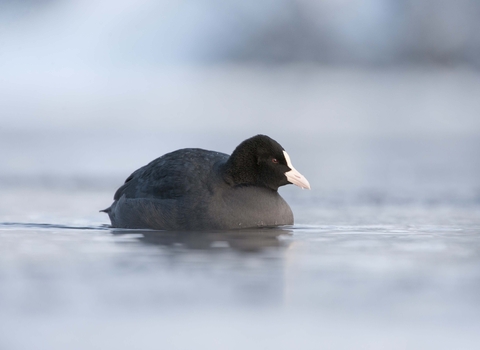
©Mark Hamblin/2020VISION
Coot
A familiar black bird of our lakes, ponds and rivers, the coot is widespread; look out for its large and untidy-looking nest on the water in spring. The coot can be distinguished from the similar Moorhen by its white beak and 'shield', and its entirely black body.
Scientific name
Fulica atraWhen to see
January to DecemberSpecies information
Category
Statistics
Length: 36-40cmWingspan: 75cm
Weight: 800g
Average lifespan: 5 years
Common. Classified in the UK as Green under the Birds of Conservation Concern 5: the Red List for Birds (2021). Protected in the UK under the Wildlife and Countryside Act, 1981.
Habitats
About
A familiar bird of our wetlands, the coot is often seen on park lakes, ponds and rivers. It spends more of its time on the water than its relative, the moorhen, and will dive to catch small invertebrates. Unlike ducks, coots will bring their catch to the surface before eating it, leading to squabbles over food. Coots breed in spring, laying between six and nine eggs in nests made among emergent vegetation. Coot chicks are black with orange fluff around the face and body; they are independent within two months of hatching.How to identify
The coot can be distinguished from the similar-looking moorhen by its larger size, entirely black body (with no white patches), and bright white bill. Coots spend much of their time away from the bankside, diving for food.Distribution
Widespread across town and countryside.Did you know?
The saying 'bald as a coot' actually refers to the white patch, or 'frontal shield', just above the bird's bill, rather than lack of feathers. Coots are also known locally as 'bald coots' and 'white-faced divers'.Watch
Coot (https://vimeo.com/444192623)
Coot by Tom Hibbert
